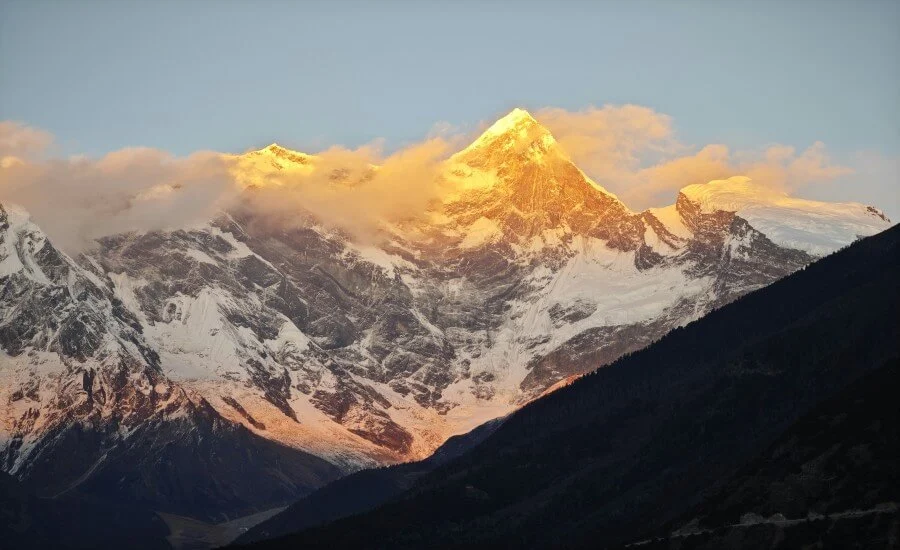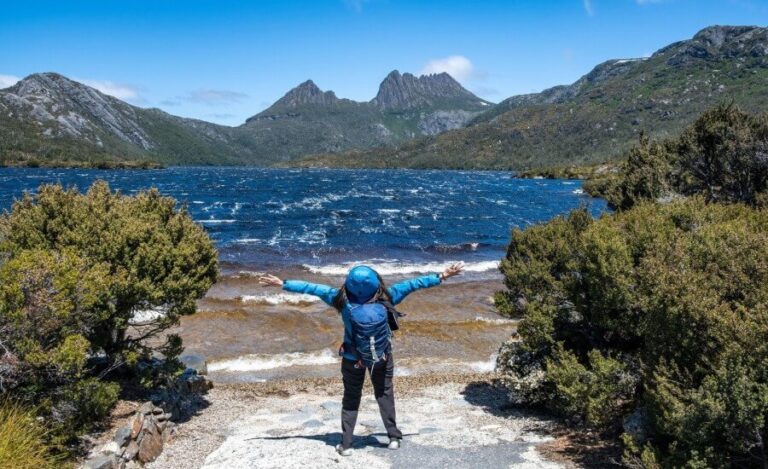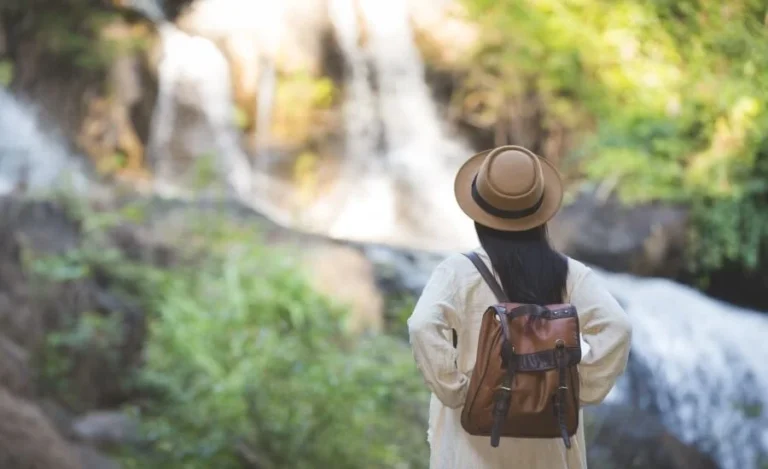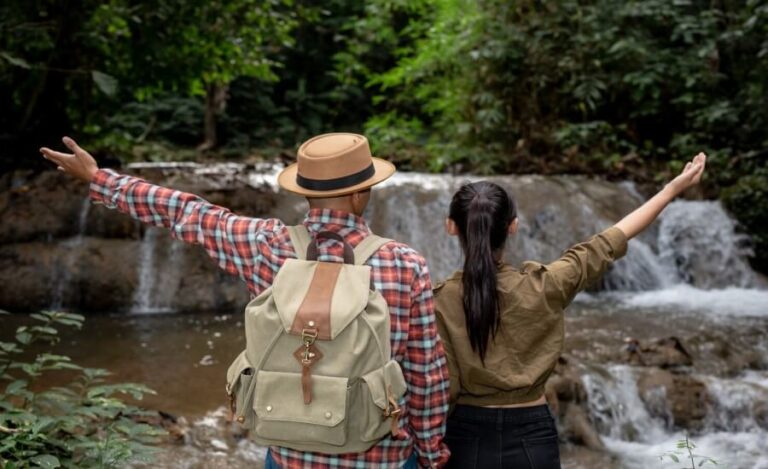
Imagine the crisp, thin air carrying the faint scent of juniper incense and the rhythmic chant from a distant monastery. Picture prayer flags whispering mantras on the wind against a backdrop of colossal, snow-dusted peaks that pierce an impossibly blue sky. Feel the profound silence of a high mountain pass, broken only by your own breath and heartbeat – a silence that invites introspection and awe. This is the essence of the Himalayas, a realm where the physical and spiritual intertwine with breathtaking power.
While the trek to Everest Base Camp holds undeniable allure for many, the Himalayas offer countless other paths – journeys that prioritize not just reaching a destination, but delving into the inner landscape. These treks are pilgrimages, opportunities for Spiritual Journeys in the Himalayas: Trekking Beyond Everest, where the challenge of the mountains becomes a catalyst for self-discovery, connection, and encountering ancient wisdom. This guide invites you to explore the profound spiritual dimension of trekking in the world’s highest mountains, looking beyond the most crowded trails to find paths that nourish the soul.
The Sacred Summits: Why the Himalayas Call to the Soul

For millennia, the Himalayas have been revered as more than just a geological wonder; they are considered the spiritual axis of the world by millions. Across traditions like Hinduism, Buddhism, and Bon, these formidable peaks are seen as sacred spaces, powerful landscapes that inspire devotion and facilitate profound inner work.
In Hinduism, the Himalayas are the abode of deities, most notably Lord Shiva residing on Mount Kailash. The life-giving Ganges River originates here, and countless pilgrimage sites (dhams) dot the foothills and high valleys, drawing devotees seeking purification and blessings. Peaks like Nanda Devi are revered as goddesses themselves.
For Tibetan Buddhism, the Himalayas are intrinsically linked to its history and practice. Guru Rinpoche (Padmasambhava) is said to have meditated in caves throughout the range, subduing local deities and embedding spiritual treasures (terma). Many peaks are considered protectors or abodes of enlightened beings (bodhisattvas). The region is scattered with ancient monasteries (gompas), hermitages, and stupas, marking places of profound practice and lineage.
Beyond specific religious doctrines, the sheer scale, power, and raw beauty of the Himalayas exert a universal spiritual pull.
- Awe and Humility: The immense scale of the mountains naturally evokes feelings of awe, shrinking the ego and placing personal concerns into a larger perspective.
- Silence and Stillness: The profound quiet found at high altitudes, away from human settlements, creates a rare space for deep listening – both externally and internally.
- Challenge as Teacher: The physical and mental challenges of trekking at altitude – the thin air, steep climbs, basic conditions – become metaphors for inner obstacles, fostering resilience, acceptance, and awareness.
- Connection with Nature: Immersing oneself in such a powerful natural environment fosters a deep sense of connection to the earth and its rhythms, reminding us of our place within the larger web of life.
The Himalayas don’t just challenge the body; they stir the soul, offering a unique environment where the veil between the ordinary and the sacred feels exceptionally thin. What is it about majestic mountains that evokes a sense of something greater?
Exploring Spiritual Trekking Routes in the Himalayas
![]()
While Everest captures global attention, seeking a spiritual journey often means venturing onto paths less travelled, where solitude is more readily found, ancient cultures are more intact, and the focus naturally shifts from summit fever to inner exploration.
Numerous regions across the Himalayas offer such profound experiences:
Ladakh & Zanskar (India)
-
This high-altitude desert region in northern India is often called “Little Tibet.” Treks here wind through starkly beautiful landscapes, connecting remote villages and incredibly well-preserved ancient Buddhist monasteries perched dramatically on hillsides. The deep silence of the landscape and the strong living Buddhist culture make it ideal for contemplative journeys.
Sikkim & Garhwal (India)
-
Nestled in the eastern and central Indian Himalayas respectively, these regions offer lush valleys, views of giants like Kanchenjunga (Sikkim), and significant Hindu pilgrimage routes (Garhwal’s Char Dham Yatra tributaries). Treks here blend stunning biodiversity with encounters with both Buddhist monasteries and Hindu temples and sadhus.
Annapurna Region Alternatives (Nepal)
-
Beyond the popular Annapurna Circuit or Sanctuary treks lie restricted areas like Upper Mustang (the former Kingdom of Lo, preserving Tibetan culture) and the Nar Phu Valley. These require special permits, limiting numbers and preserving a sense of remoteness and cultural authenticity, winding through villages untouched by mass tourism.
Manaslu Circuit & Tsum Valley (Nepal)
-
Circling the world’s eighth highest peak, Manaslu (considered sacred), this trek offers stunning scenery and deep immersion in Tibetan Buddhist culture, especially if combined with the side trip into the sacred Tsum Valley, a declared non-violent zone. It’s a challenging but rewarding alternative to more crowded circuits.
Bhutan
-
The entire Kingdom of Bhutan prioritizes Gross National Happiness over GDP and maintains a policy of high-value, low-impact tourism. Treks here, like the famous Snowman Trek or shorter cultural routes, invariably involve visits to stunning dzongs (fortress-monasteries) and a deep engagement with living Vajrayana Buddhism in a pristine mountain environment.
Choosing these less-trodden paths often means simpler facilities but rewards trekkers with quieter trails, more authentic cultural interactions, and a greater opportunity to connect with the profound stillness and spiritual energy of the high Himalayas.
Spiritual Journeys in the Himalayas: Trekking Beyond Everest
Undertaking Spiritual Journeys in the Himalayas: Trekking Beyond Everest transforms the physical act of walking into a profound practice of inner exploration. The journey outward mirrors the journey inward, with the trail itself becoming a teacher and the landscape a catalyst for reflection and growth.
Trekking as Meditation
- The simple, rhythmic act of walking for hours each day can become a powerful form of moving meditation.
- Focusing on the breath syncing with footsteps, noticing the sensations in the body, and observing the ever-changing landscape without judgment cultivates present moment awareness.
- The simplicity of the daily routine – walk, eat, sleep – strips away external complexities, allowing the mind to settle.
Encounters with the Sacred
- These treks are often interwoven with tangible expressions of faith.
- Visiting ancient monasteries resonant with centuries of chanting, spinning prayer wheels, respectfully observing monks and nuns in their daily lives, or simply sitting in silence near a stupa can be deeply moving experiences.
- These encounters offer glimpses into living spiritual traditions and invite personal reflection on devotion, impermanence, and compassion. Engaging respectfully – dressing modestly, asking permission before photographing people, learning basic etiquette – deepens the connection.
Nature as Teacher
- The mountains themselves become profound teachers.
- The vast, imposing landscapes teach humility.
- The unpredictable weather teaches acceptance and adaptability.
- The resilience required to navigate challenging terrain mirrors the inner resilience needed to face life’s difficulties.
- The cycle of dawn, day, dusk, and night against the immense backdrop speaks of impermanence and the flow of time.
- Paying attention to these lessons fosters wisdom and perspective.
The Inner Ascent
- The physical challenges – altitude, fatigue, basic living conditions – often mirror inner challenges.
- Facing fear on an exposed trail, pushing through exhaustion, dealing with discomfort – these moments become opportunities to observe the mind’s reactions, cultivate equanimity, and discover inner strength.
- The external ascent up a pass can symbolize an internal ascent in awareness or understanding.
On a spiritual trek, the destination is not just a geographical point, but a state of being. The journey itself, with all its beauty and challenges, becomes the practice. How might the physical act of trekking facilitate your own inner journey?
Footprints of Faith: Sacred Sites Along the Trail
Trekking in the spiritual heartlands of the Himalayas means constantly encountering tangible symbols and structures imbued with deep meaning. Recognizing these elements enhances the journey, transforming the landscape from mere scenery into a sacred geography.
Here are some common footprints of faith:
- Prayer Flags (Lung Ta): Ubiquitous in Tibetan Buddhist regions, these colourful flags printed with mantras and symbols are hung on passes, peaks, bridges, and monasteries. The wind is believed to carry the prayers and blessings across the land, promoting peace, compassion, and wisdom. Seeing them flutter is a constant reminder of aspiration and interconnectedness.
- Mani Stones & Walls: Stones meticulously carved with the mantra “Om Mani Padme Hum” (invoking the compassion of Avalokiteśvara) are often piled into long walls (Mani walls) along trails or near villages. Trekkers traditionally walk clockwise around these structures, keeping them to their right, as a sign of respect and a way of accumulating merit.
- Stupas (Chortens in Tibetan): These dome-shaped or tiered structures often house relics or commemorate sacred events or enlightened beings. They symbolize the enlightened mind of the Buddha and are focal points for devotion and circumambulation (walking clockwise around them). Their architectural elements represent the path to enlightenment.
- Gompas (Monasteries): Centers of Buddhist learning, practice, and community life, often dramatically located. Visiting a gompa (respectfully, of course) offers a chance to witness religious art (thangkas, murals), observe rituals, and sometimes interact with monks or nuns. The atmosphere is often one of deep peace and devotion.
- Hermitages & Meditation Caves: Throughout the Himalayas are caves and simple dwellings where renowned masters and yogis have meditated, sometimes for years. While often inaccessible, knowing you are walking in areas sanctified by such deep practice adds another layer of reverence to the journey.
- Sacred Lakes & Mountains: Many peaks (like Kailash, Machhapuchhre, Manaslu) and lakes (like Gosainkunda, Mansarovar) are considered sacred and are sites of pilgrimage (kora or parikrama – ritual circumambulation). Trekking these routes is an act of devotion.
Engaging with these sacred elements requires respect and cultural sensitivity. Observe local customs, ask before taking photos of people or inside monasteries, dress modestly, and move with awareness. Doing so allows you to connect more deeply with the spiritual tapestry of the region.
Trekking Mindfully: Tips for the Inner Journey
While the Himalayan environment is inherently conducive to introspection, cultivating mindfulness intentionally can significantly deepen the spiritual dimension of your trek.
Here are some practical tips:
- Slow Down: Resist the urge to rush. Walk at a pace that allows you to breathe comfortably and observe your surroundings. Take frequent short pauses just to look and listen.
- Engage All Senses: Move beyond just seeing the views. Notice the feeling of the sun and wind on your skin, the sound of streams and birdsong (or silence), the scent of pine or damp earth, the taste of your food and water.
- Practice Gratitude: Regularly take moments to appreciate the opportunity to be in such a place, the beauty around you, the strength of your body, the support of your team (if guided), the hospitality of locals.
- Mindful Walking: Pay attention to the sensation of your feet meeting the ground. Sync your breath with your steps. Notice how your body moves and adapts to the terrain.
- Digital Detox (Consciously): Minimize phone/internet use. Use devices primarily for essential navigation or photography, not constant connection or entertainment. Embrace the opportunity to disconnect from the digital world and connect with the present.
- Be Open to Insights: Create mental space for thoughts and feelings to arise without judgment. Don’t force introspection, but be receptive to clarity or understanding that might surface during quiet moments.
- Journaling (Optional): If helpful for you, spend a short time each evening reflecting on the day’s experiences, challenges, insights, and feelings.
- Practice Compassion: Be kind to yourself when facing challenges (physical or mental). Extend compassion to fellow trekkers, guides, porters, and local people you encounter.
- Observe Your Mind: Notice recurring thought patterns, judgments, or expectations without getting carried away by them. Gently bring your awareness back to your breath or your surroundings.
- Respectful Interaction: Engage with local culture and sacred sites with genuine respect, humility, and a willingness to learn.
Mindful trekking isn’t about achieving a perfect state of zen, but about bringing gentle, consistent awareness to the inner and outer journey, allowing the experience to unfold more richly.
Choosing Your Path: Considerations for a Spiritual Trek
Selecting the right Himalayan trek, especially one with a spiritual focus, requires careful consideration beyond just physical difficulty. Aligning the journey with your intentions and capabilities is key.
- Define Your Intention: What are you seeking? Solitude and deep introspection? Immersion in Tibetan Buddhist culture? Encounters with Hindu pilgrimage sites? Connection with raw nature? Clarity on this will help narrow down regions and routes.
- Research Regions & Routes: Explore treks known for their spiritual character (as mentioned earlier – Ladakh, Zanskar, Sikkim, Manaslu, Upper Mustang, Bhutan, specific pilgrimage routes). Look at itineraries, cultural highlights, and typical trekker numbers.
- Assess Difficulty & Duration: Be realistic about your physical fitness, trekking experience, and tolerance for altitude. Spiritual treks often go to high altitudes and may involve basic facilities. Choose a trek length and difficulty level that matches your capabilities. Pushing too far beyond your limits can hinder mindful engagement.
- Altitude Acclimatization: Prioritize itineraries that allow for gradual acclimatization. Altitude sickness is a serious risk; spiritual insight is unlikely when battling severe headaches or nausea. Factor in rest days.
- Guided vs. Independent: For remote areas with complex logistics, restricted permits, or deep cultural immersion, a well-chosen guided trek with a reputable, culturally sensitive local operator is often beneficial and more responsible. They handle logistics and provide invaluable cultural context. Independent trekking is possible on some routes but requires more planning and self-sufficiency.
- Choose Operators Wisely: If going guided, research operators thoroughly. Look for those with strong local ties, ethical practices (fair treatment of staff), environmental responsibility, and experience with the specific region and cultural context. Ask about their approach to cultural interaction and safety.
- Physical & Mental Readiness: Train adequately for the physical demands. Equally important is mental preparation – be ready for simplicity, potential discomfort, challenges, and the emotional terrain that may arise in silence or remote settings.
Choosing thoughtfully ensures your energy is focused on the journey itself, rather than being overwhelmed by logistical or physical struggles beyond your capacity. What factor is most important to you when considering a spiritual trek?
Conclusion: The Summit Within

Spiritual Journeys in the Himalayas: Trekking Beyond Everest offer a unique alchemy of physical exertion, cultural immersion, and profound introspection. By venturing onto paths less dominated by commercialism and more resonant with ancient traditions and the raw power of nature, trekkers open themselves to experiences that can genuinely shift perspectives and stir the soul.
These journeys remind us that the highest peaks are not always external. The true summit often lies within – the overcoming of inner obstacles, the discovery of quiet strength, the clarity gained in stillness, the connection forged with oneself and the world. The mountains serve as magnificent teachers, reflecting our own resilience, impermanence, and capacity for awe. The encounters with living faith traditions offer humbling lessons in devotion, compassion, and different ways of understanding existence.
Trekking in the Himalayas with a spiritual intention is not about escaping life, but about engaging with it more deeply, stripped bare of distractions, under the vast, watchful gaze of the highest mountains on Earth. It’s an invitation to walk, breathe, observe, and listen – until the boundary between the outer landscape and the inner landscape begins to dissolve.
If you feel the call of the high peaks, consider venturing beyond the familiar. Choose your path with intention, walk with mindfulness and respect, and be open to the profound peace and wisdom that await in the sacred silence of the Himalayas. The journey may well lead you to discover a summit far more valuable than any geographical peak.










